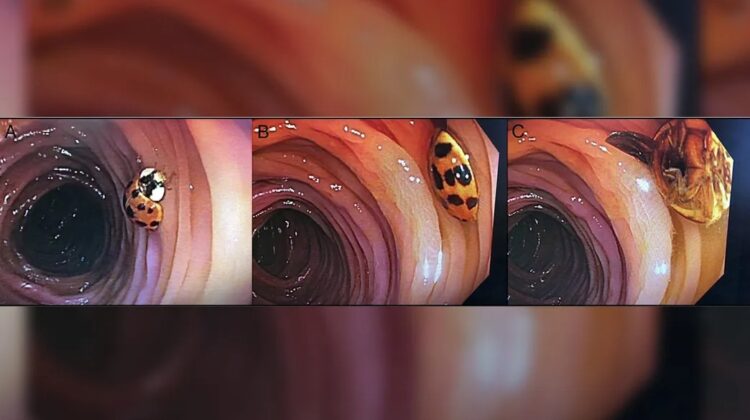
There are a few things gastroenterologists might look for when entering the human colon. Even though it’s usual to have a tumor, scarring, ulcers, and a small amount of excrement, sometimes examining the intestine reveals more surprising residents. A clinical team that discovered a ladybug within a patient’s colon and reported their findings in the ACG Case Reports Journal in 2019 could undoubtedly vouch for this.
We humans love to eat, and while nature has given us an advanced mechanism for processing food, the old poop chute can occasionally become damaged due to its many quirks and intricacies. Thankfully, colonoscopies—a treatment that allows us to peer into our bodies—have become a common practice in modern medicine. A camera is inserted upstream into the colon through the anus and is moved down the whole length of the large intestine as part of the unpleasant but occasionally life-saving inquiry. It can discover cancer, signs of sickness, and, obviously, ladybugs here.
Anyone who has had one will attest to how difficult it is to be ready for a colonoscopy. Getting the picture-perfect colon involves abstinence and purging because the stool must be as empty as possible for the greatest photographs. Polyethylene glycol, an osmotic laxative used to treat constipation, was the exact combination required to set the stage for our ladybug’s guest star appearance. A sped-up voyage through the bowels, made possible by the poop-inducing goop, is how the ladybug would have lived to such a late stage in the digestive process appearing very fresh, according to the researchers on the revealing colonoscopy.
The patient drank a gallon of polyethylene glycol the night before the colonoscopy, and the test results were otherwise normal, according to the authors. The bug may have been able to evade digestion by the stomach and upper small intestine thanks to his colonoscopy preparation.
It’s unclear how the ladybug got inside this 59-year-old man in the first place, but it probably got inside while he was sleeping. The authors of the paper identify it as Harmonia axyridis and observe that its “red-orange to dull cream colors are very eye-catching.” Harmonia axyridis was introduced to North America as a pest control measure in the early 1900s. A lovely color scheme for colon accessories.
It turns out that ladybugs aren’t the only beetles that can make it through a journey down colonial road (in the sense of an intact corpse). Dr. Keith Siau, a specialist in gastroenterology, demonstrated through a series of tweets that cockroaches have occasionally been found during colonoscopies despite the fact that our science and medicine is extremely sophisticated.

Your article helped me a lot, thanks for the information. I also like your blog theme, can you tell me how you did it?